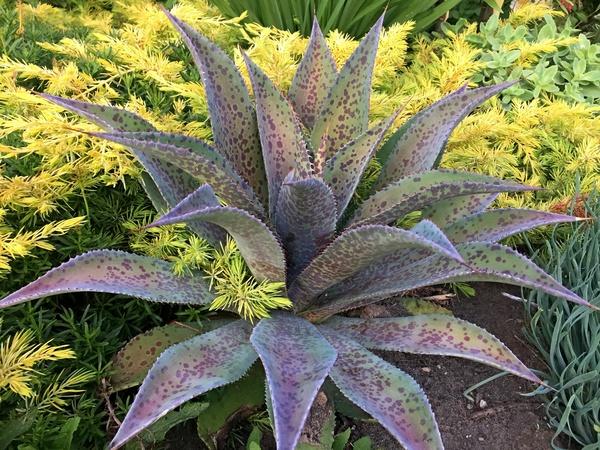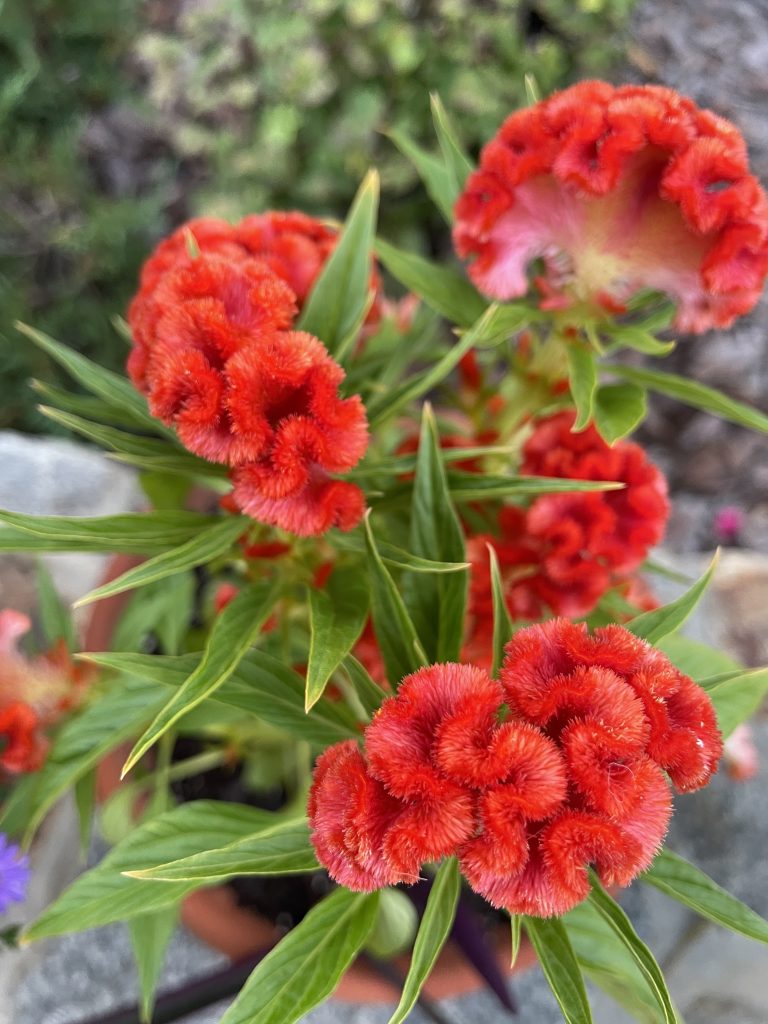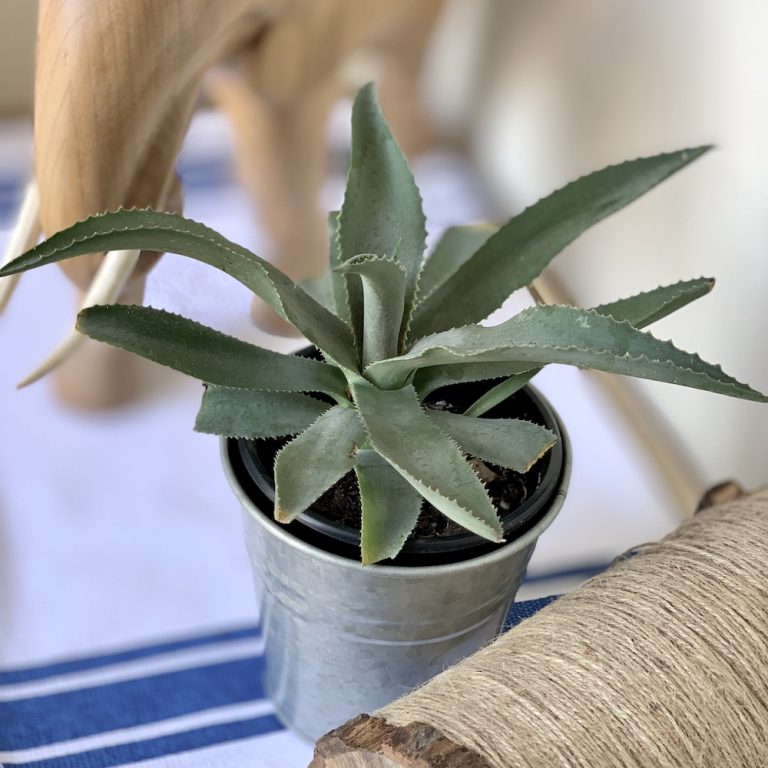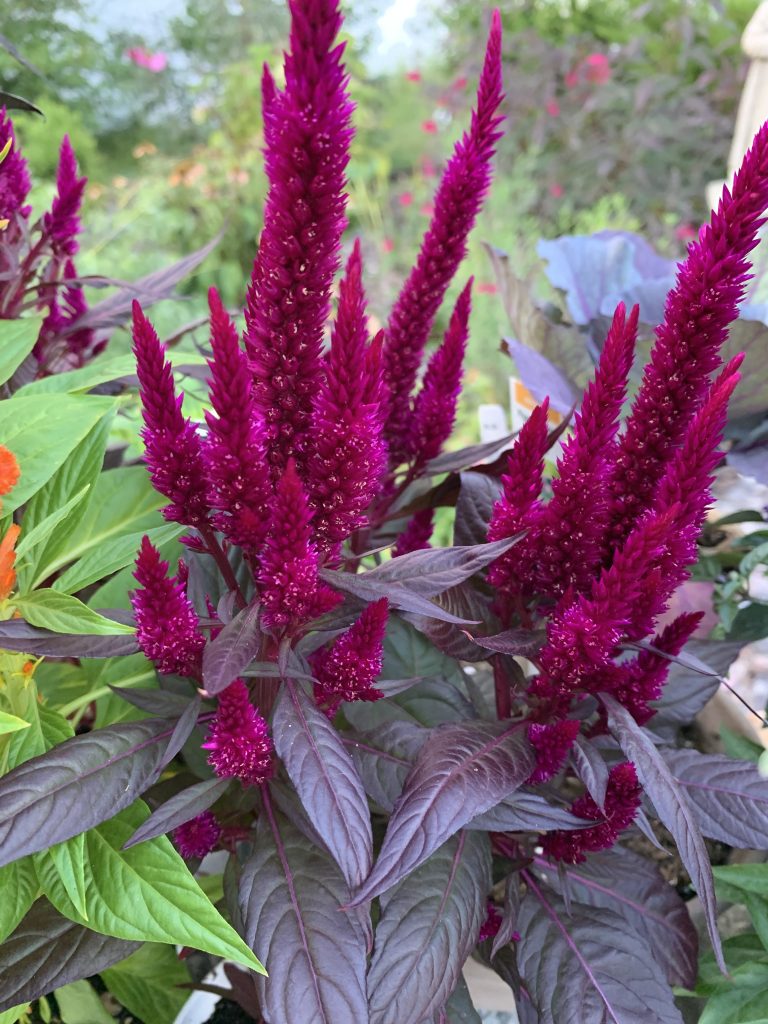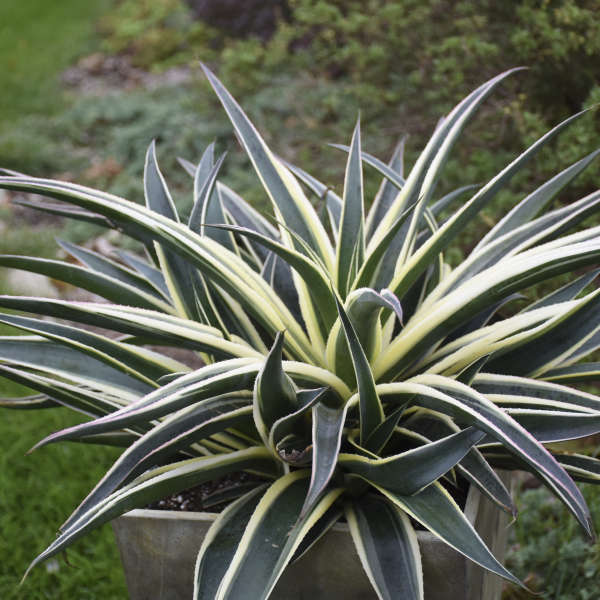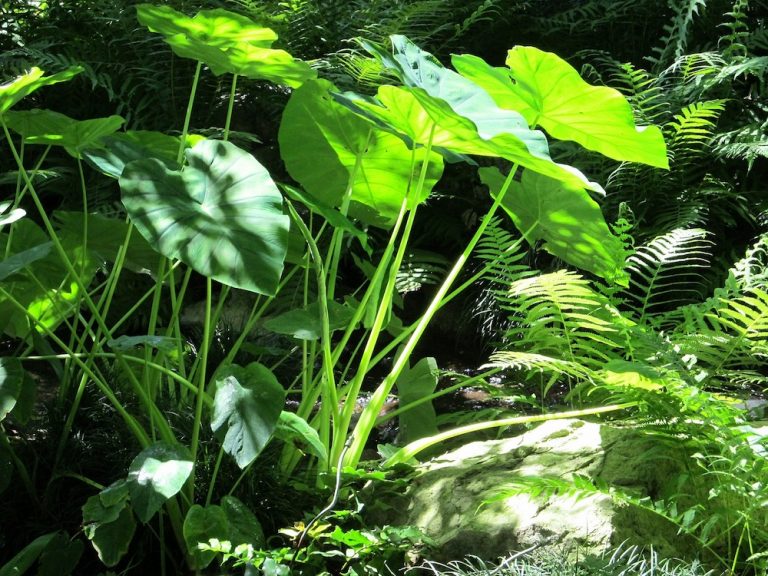How to Grow Capsicum Black Pearl
Grow Capsicum Black Pearl. Create drama in your summer and fall garden with “Black Pearl” ornamental peppers. Keep the bees and other pollinators humming in your garden with this striking deep purple-black beauty.
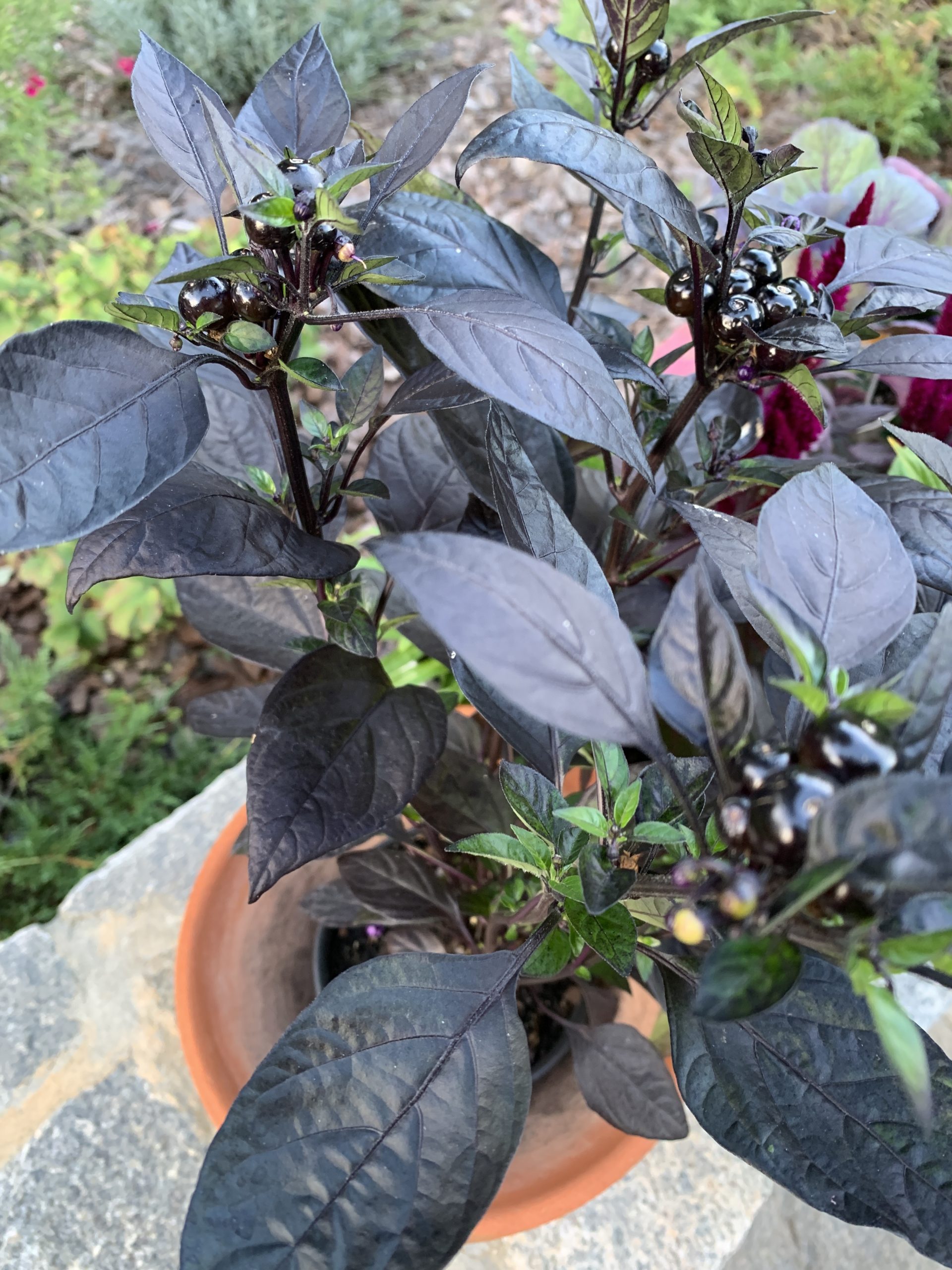
Create a beautiful fall garden with Black Pearl Capsicum. Grow this striking plant from late Spring and into the fall season. Pair this capsicum with other festive fall plants such as Celosia and Sunbeckia annuals. There are between 20 and 35 species of the plant Capsicum. In this post, we are focusing on the Black Pear Capsicum annuum.
Bred and introduced in 2006 by the talented American plant breeder team of Rob Griesbach and John Stommel. Mr. Griesbach is from the ARS Floral and Nursery Plants Research Unit in the US Department of Agriculture. While Mr. Stommel, a plant geneticist, is sometimes referred to as Professor Pepper. The Black Pearl variety won an All-America Selection award that same year in 2006.
Characteristics of Capsicum annuum Black Pearl
The Black Pearl is known as Black Pearl Ornamental Pepper, Ornamental Pepper ‘Black Pearl’, or simply as ornamental pepper. Hardy in zones 9 to 11.
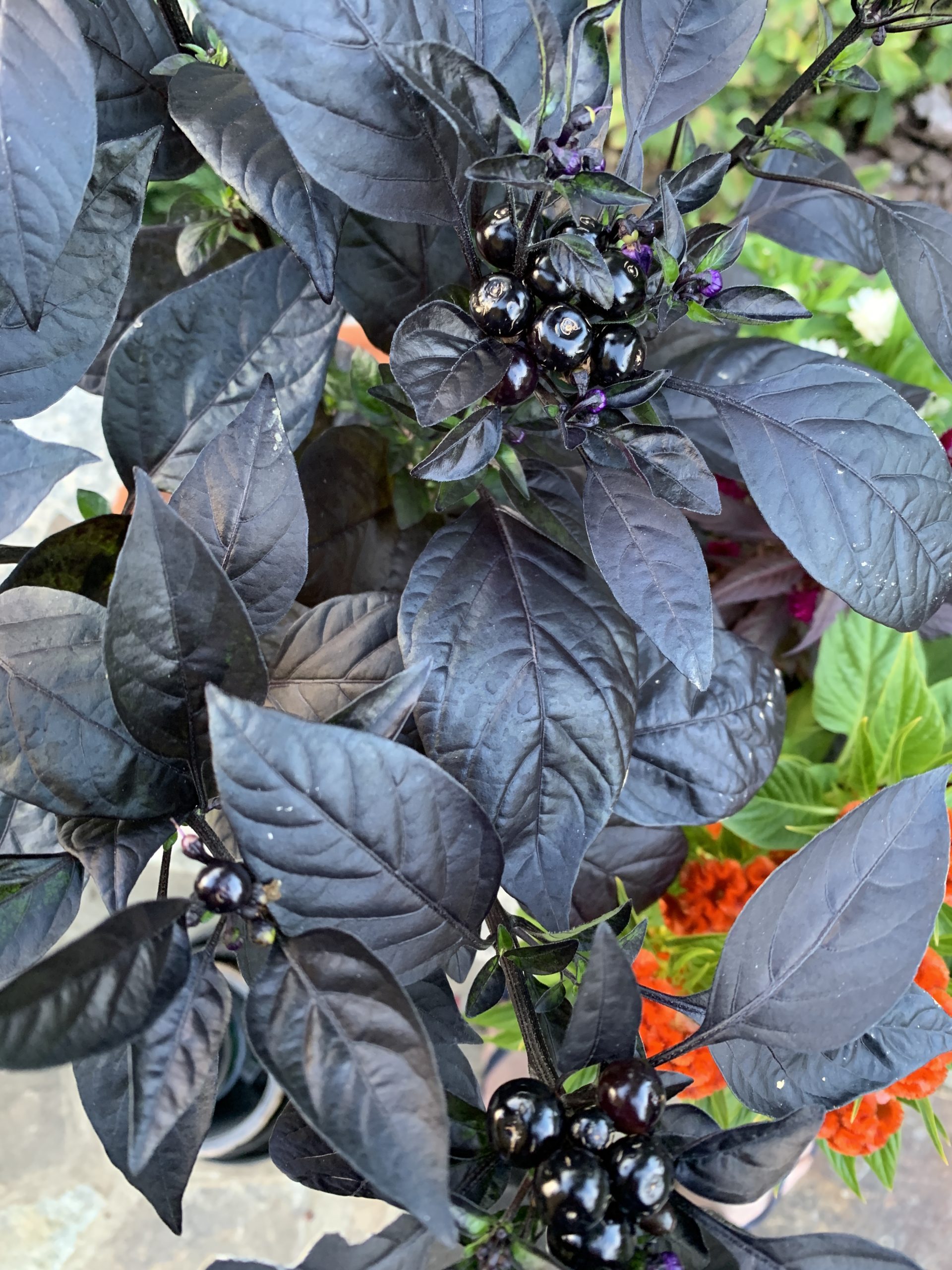
With its upright, rounded, and bushy growth habit, the Black Pearl cultivar originated in the United States. It is native to the Americas. A member of the Solanaceae family, it is known for its foliage and shiny, pearl-like black fruits.
This ornamental pepper species features deep purple-black foliage and shiny, black fruits of pearl size that mature to red. Although they are grown for their dramatic coloring, the pearl-sized peppers are edible. This ornamental pepper has a medium-hot heat level—the heat level measures between 10,000 and 30,000 Scoville Heat Units (SHU).
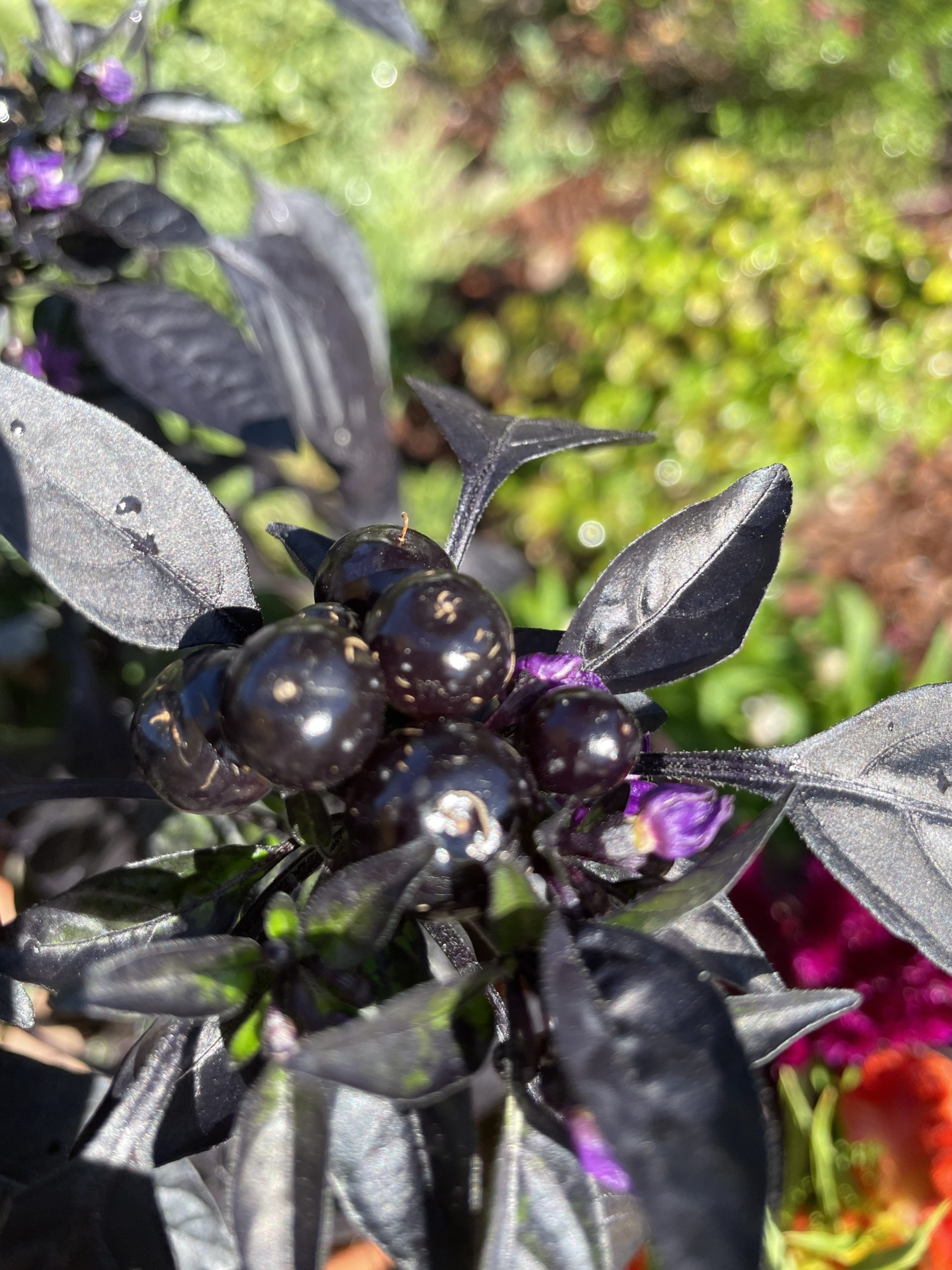
Even though the purple flowers are short-lived, they attract bees and other pollinators. Pepper plants tend to self-pollinate; however, pollinators increase the number of fruit produced.
Enhance your fall garden with ornamental peppers. Perfect plant pairs for other fall-blooming plants, as well as pumpkins and gourds. Remember, the fall season is for planting.
How to Grow Capsicum Black Pearl – About the Capsicum
First, the capsicum annuum ‘Black Pearl’ features. These are the best growing conditions for this ornamental pepper:
- Latin name is Capsicum annuum
- The common name is ornamental pepper
- Makes an excellent black accent for containers and garden flower beds
- Grows in zones 9 to 11
- Provide 8+ hours of full sun to enhance the dark foliage color
- Reaches 14” to 36” tall
- Allow 10” to 20” apart when planting en masse
- Flowers form in small, star-shaped, lilac-purple clusters
- Blooms from early to mid-summer into Fall until frost
- Fruit develops after flowering
- Fruits are small, round, and shiny, emerging as black and ripening to cherry red
- Foliage emerges green but turns to a deep purple to black color in a completely sun-filled setting
- Fruit is edible; however, it is extremely hot
- Hotness ranges from 10,000 to 30,000 SHUs
- Pepper heat level compares to a serrano or mild cayenne pepper
- Attracts bees and other pollinators
- Peppers are self-pollinating; however, pollinators lead to higher fruit production
- Growth habit is upright and compact,
- Grow this dramatic Capsicum in containers or as an accent in garden beds
- Plant in well-draining soil conditions
- Water 2 to 3 times per week until the plant is established
- Native to the Americas
Garden Site Selection – Grow Capsicum Black Pearl
Carefully consider the garden site where you plant the Black Pearl Capsicum. To maintain its deep, dark color, this species requires full sun with a minimum of 8+ hours. Plant in a full sun location. Plant in late spring or early summer after the last frost has passed.
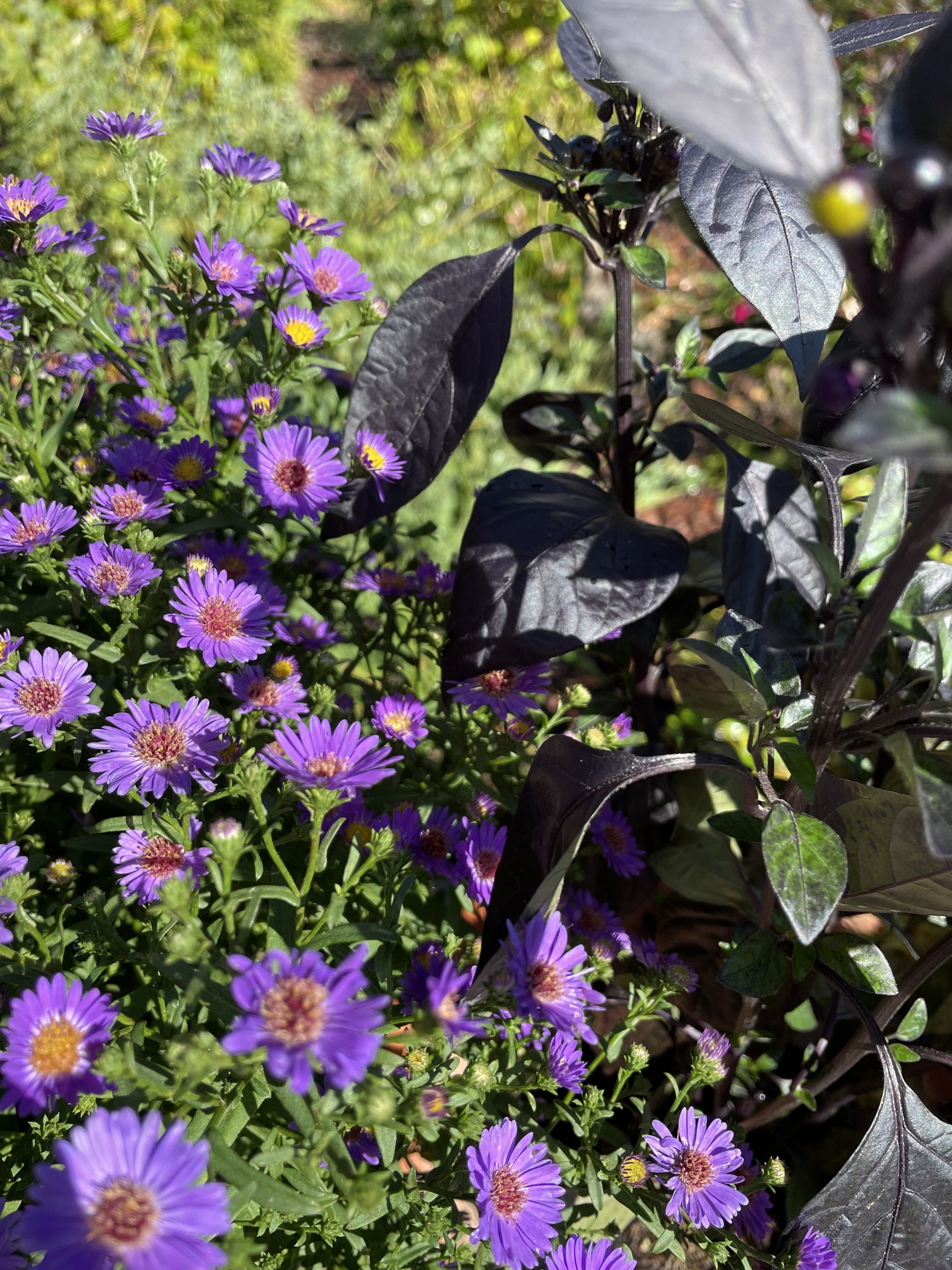
Although Capsicum is heat and drought-tolerant, it requires consistent watering. Be sure you have access to a nearby water source for frequent watering. Remember, if you are growing this plant in a container, it will require more regular watering. If growing Black Pearl in the ground, then water 2 to 3 times per week until established.
Capsicum is a beneficial plant, as it supports pollinators, such as bees. They thrive in full sun with well-draining soil. Maximize the dark coloring of the foliage and fruit with a full sun flower bed.
Soil Preparation for Ornamental Peppers
- Prepare the garden soil area. Loosen and break the soil apart using a trowel or shovel.
- Black Pearl prefers well-draining soil. Draw excess water away from the root system by adding sphagnum peat moss to the garden bed. For an additional boost, add compost to the soil mix.
- Mix sphagnum peat moss and compost with the garden bed soil.
- Sprinkle milky spore powder in the soil if you have Japanese Beetles. This is an organic product that eliminates grubs in the soil before they develop into Japanese Beetles. Skip the milky spore step if the garden doesn’t have grubs or Japanese Beetles. Milky Spore prevents grubs laid by the Japanese Beetles from emerging the following year. Grubs that live below ground munch on the grass roots. The adult Japanese Beetles eat flowers and foliage of many plants.
If you are planting your Capsicum in a container, then mix the peat moss and compost with some quality potting soil. Then fill a container with the mixture and sprinkle a small amount of milky spore to avoid grubs and Japanese Beetles.
How to Grow Capsicum Black Pearl
The next step is to plant the Capsicum plant.
- Dig a hole at the same depth as the plant container and twice the width of the plant’s root ball.
- Second, drop the plant with the crown 1” above the soil level. Cover the root system with the surrounding soil. Pack the soil around the plant roots to eliminate any air pockets.
- Third, build a water basin around the plant. A water basin allows water to sink to the roots rather than run off. A water basin is merely a miniature well that encircles the plant. Think of it as a moat, but smaller. It captures any runoff water, which is then absorbed into the ground. Water two to three times a week for the first year until the plant is established.
- Finally, during the warmer months, water regularly and more frequently. This is especially important when temperatures reach the 90s or when there are several days without rainfall.
When to Plant this Ornamental Pepper
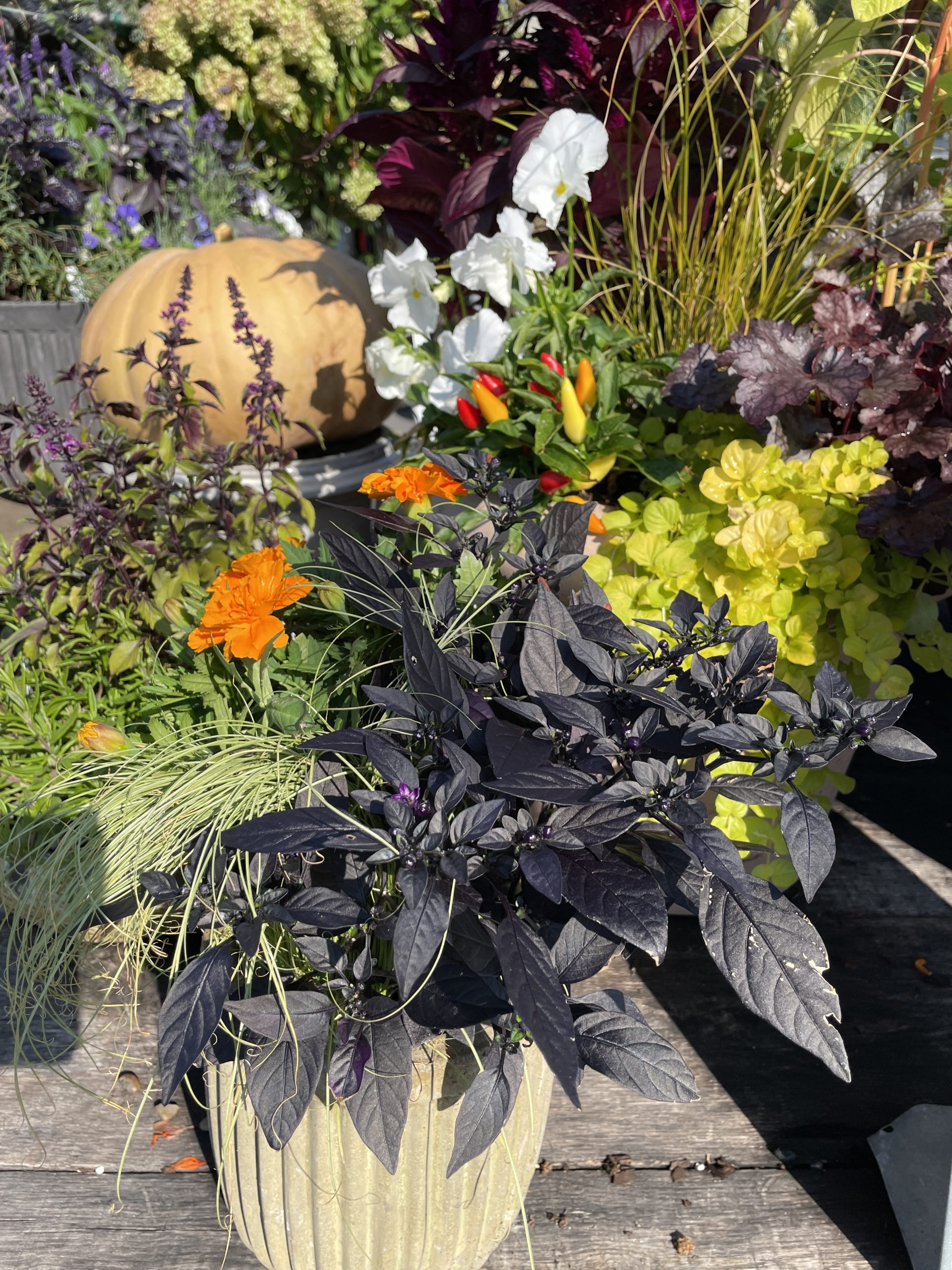
Plant Black Pearl as soon as you can during the early summer or fall seasons. This allows the Black Pearl time to adapt to the flower bed. Water the Capsicum daily for several weeks to ensure the plant settles in. Monitor the plant every few days for the first year.
Tips for How to Grow Ornamental Peppers
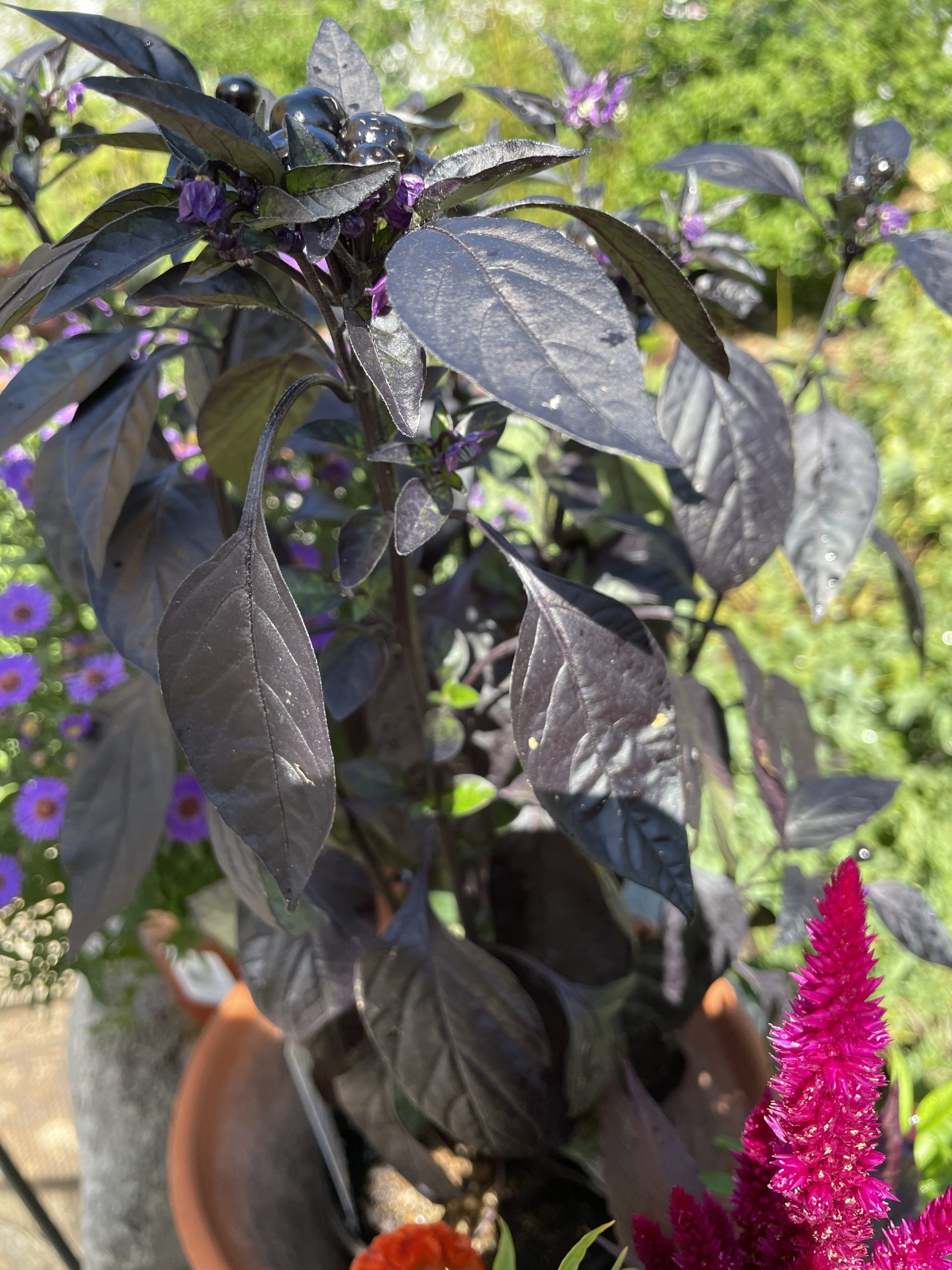
- Water regularly to support regular blooming.
- Fertilize every two weeks with an all-purpose fertilizer
- Mulch the Capsicum plants to retain water during summer and protect them over winter.
- When planting several Capsicum plants together, space them apart to allow for sufficient growth. Space plants 10” and 20” apart
- Promote bushier, fuller-shaped plants by pinching tips off of younger plants.
- Develops into a pyramid-shaped plant with no significant pruning needed
- Grow as a specimen plant, as a focal point in an ornamental garden, or in containers
- Use as a centerpiece or in a festive fall display container
- Peppers are edible, although extremely hot; they can be dried and ground into powder or flakes for cooking
- Watch for aphids and spider mites. Treat infected areas with a quality insecticidal soap or neem oil.
- Under wet conditions with poor air circulation, fungal diseases are more common
- Leaves are toxic to both humans and pets. The leaves of the Black Pearl are toxic to both humans and pets.
- Americas native
Companion Plants for Capsicum Black Pearl
- Sunbeckia Juliana Rudbeckia
- Celosia Twisted Yellow
- Chrysanthemums
- Create a fall display with Pumpkins and Gourds
- Display alongside Corn Stalks for a Fall theme
With some planning, this ornamental pepper will thrive quickly. You’ll need a sunny garden area, water, and space to grow. Then, sit back and enjoy the Fall color display. You’ll love the dramatic coloring of the plant. And as a bonus, you’ll attract tons of bees and other pollinators.
This concludes our post on growing Capsicum Black Pearl plants. Please tell us what you think about this stunning plant. Do you have a favorite Capsicum plant?
If you enjoyed this post . . . .
You Will Enjoy Our Other Gardening-related posts.
Pumpkins
Fall Blooming Plants for Pollinators
Hardy Chrysanthemums
If you have any questions, feel free to contact us. We are always ready to help. Include your hardiness zone and light requirements with any gardening questions. Thank you for dropping by.
Mary

